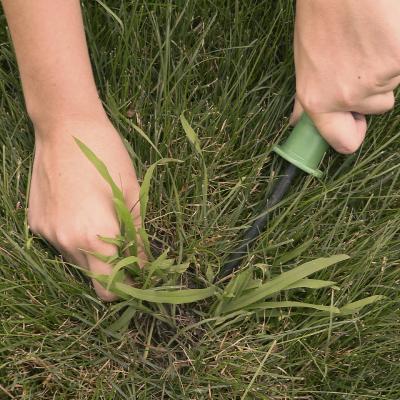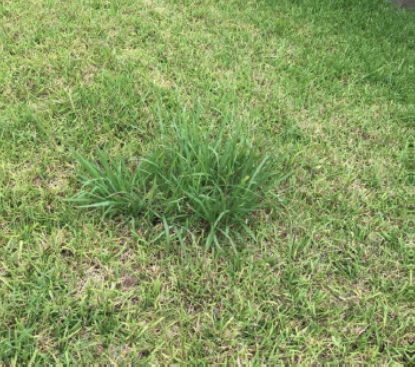Alabama's 10 Most Notorious Weeds: How to Reclaim Your Lawn

Maintaining a lush, healthy lawn in Alabama’s warm and often humid climate can be a real challenge—especially with relentless weeds that seem to pop up everywhere. Alabama’s unique climate makes it a perfect breeding ground for some of the toughest weeds in the South. With the right approach, though, you can keep your yard looking pristine and reclaim it from even the most stubborn intruders. Here’s a closer look at the most notorious weeds in Alabama, along with some practical tips on how to manage them.
1. Crabgrass

What to Look For:
Crabgrass is a light green, low-growing weed with wide, flat blades. It tends to grow outward from a central point in a crab-like form, with stems and leaves lying close to the ground. Its seed heads, which appear in late summer, have a unique finger-like shape, often resembling a bird’s foot with three to seven spikes branching out.
Where It Grows:
Crabgrass is common in sunny areas with weak or thin turf, especially in lawns that are mowed too low or watered inconsistently. It loves the warm, humid Alabama climate and thrives in disturbed or compacted soils.
Control Tips:
Early prevention is crucial for crabgrass. In Alabama, pre-emergent herbicides applied in late winter or early spring (around late February to early March) can stop crabgrass seeds from germinating. For existing crabgrass, post-emergent herbicides are available but must be applied carefully in midsummer to avoid harming your grass.
2. Nutsedge

What to Look For:
Yellow nutsedge, often called nutgrass, is easily mistaken for grass but grows faster and taller than typical lawn grasses. It has a distinctive triangular stem (when viewed in cross-section) and glossy, light green leaves that grow in sets of three. Small, spiky flower clusters form at the top of the plant, with a yellow or purple hue depending on the species.
Where It Grows:
This weed is commonly found in wet, poorly drained soils, often in lawns with excessive moisture or compaction. Nutsedge spreads through underground tubers (nutlets), making it particularly hard to control.
Control Tips:
Regular mowing can help keep nutsedge from spreading, but pulling it out is often not enough due to its underground tubers. Herbicides designed specifically for nutsedge can be effective but may require multiple applications. Additionally, consider addressing any drainage issues in your yard to prevent future outbreaks.
3. Dallisgrass

What to Look For:
Dallisgrass is a tall, clumping weed with thick, coarse blades that grow in a circular pattern. Its seed heads are long spikes with clusters of seeds along the stem, giving it a bristly appearance. The weed can reach up to a foot in height if left unmowed.
Where It Grows:
Dallisgrass thrives in warm, moist conditions and is often found in lawns with poor drainage or areas where the grass is sparse. It’s a resilient weed that can withstand Alabama’s hot, humid summers and even spreads through rhizomes and seeds.
Control Tips:
Hand-pulling is an option, but be sure to get the roots. For larger infestations, selective herbicides can help, though Dallisgrass is one of the harder weeds to manage chemically. It thrives in moist areas, so proper lawn drainage and aeration can discourage its growth.
4. Chamberbitter

What to Look For:
Chamberbitter, also known as mimosa weed, has small, alternating leaves that resemble those of a mimosa tree, folding up at night. The plant is usually low-growing, forming clusters near the ground, and produces small, ball-like seeds along the underside of its stems.
Where It Grows:
Chamberbitter thrives in bare, sunny spots and is common in lawns where grass is thin or damaged. It can also grow in garden beds and other areas with loose soil.
Control Tips:
A pre-emergent herbicide applied in early spring can prevent chamberbitter seeds from sprouting. Once it appears, post-emergent herbicides that target broadleaf weeds are usually effective. Regular mowing and thick, healthy turf can also help suppress its growth.
5. Wild Violet

What to Look For:
Wild violets are known for their heart-shaped, glossy leaves and small, violet-to-purple flowers that bloom in spring. The leaves grow in a basal rosette pattern, and the plant can spread through underground stems (rhizomes) as well as seeds.
Where It Grows:
This weed prefers shady, moist areas and often invades lawns with weakened grass, particularly in compacted soils. It’s resilient and challenging to eliminate once established.
Control Tips:
This weed is particularly resistant to many herbicides. Broadleaf weed killers can be effective if applied correctly, often requiring multiple treatments. Keeping your lawn thick and healthy will help prevent wild violet infestations.
6. Poa Annua (Annual Bluegrass)

What to Look For:
Poa annua, or annual bluegrass, is a cool-season weed with bright green blades that form clumps. It has fine-textured leaves with a boat-shaped tip and produces small, bushy, white seed heads, which can appear as soon as temperatures cool in early fall.
Where It Grows:
Poa annua is often found in bare spots or areas with compacted soil and thrives in Alabama’s cooler fall and winter seasons. It can quickly become noticeable in a lawn due to its clumpy growth and lighter green color.
Control Tips:
Applying a pre-emergent herbicide in the fall can help stop Poa annua before it has a chance to sprout. Maintaining a strong, healthy lawn throughout the year is essential to prevent this weed from finding spots to grow.
7. Dollarweed

What to Look For:
Dollarweed, also called pennywort, has shiny, round leaves that resemble small lily pads. The leaves have scalloped edges and a distinctive center stem, giving them a circular, coin-like appearance. This weed grows low to the ground, spreading out in clusters.
Where It Grows:
Dollarweed prefers moist, poorly drained areas and is often found in lawns with excessive watering or poor drainage. It’s especially common after heavy rains or in shaded spots with high humidity.
Control Tips:
Improving drainage and reducing watering frequency can help control dollarweed. Herbicides targeting broadleaf weeds can be effective but may require repeated applications. Aerating your soil may also help by allowing better water absorption.
8. Henbit

What to Look For:
Henbit is a winter annual with square, hairy stems and scalloped, heart-shaped leaves. The upper leaves grow close to the stem, wrapping around it. In spring, henbit produces small, tubular purple flowers at the top of the plant, attracting bees and other pollinators.
Where It Grows:
Henbit grows in weak or bare patches of lawns, especially in shady, damp areas. It emerges in the fall and can remain through winter, making it a common sight in Alabama during the cooler months.
Control Tips:
A pre-emergent herbicide applied in the fall can help prevent henbit from sprouting. If it appears, a post-emergent herbicide effective on broadleaf weeds can control it. Keeping your lawn healthy and dense is key to keeping henbit out.
9. Spotted Spurge

What to Look For:
Spotted spurge is a low-growing weed with small, dark-green leaves that often have a reddish-purple spot in the center. The stems are pinkish and covered in tiny hairs, producing a milky sap when broken. Spotted spurge grows close to the ground in a sprawling, mat-like fashion.
Where It Grows:
This weed thrives in dry, sunny areas and is commonly found in bare patches of lawns, driveways, and sidewalks. It’s particularly aggressive and can quickly form dense mats that crowd out grass.
Control Tips:
Spot-treating with a post-emergent herbicide for broadleaf weeds can help control spurge. Mulching can also help keep it out of garden beds. In your lawn, maintaining thick, healthy turf will minimize the open spaces where spurge likes to settle.
10. Purslane

What to Look For:
Purslane is a succulent weed with thick, fleshy leaves that are usually dark green and oblong. The plant has a reddish stem that grows close to the ground in a spreading manner. It produces small yellow flowers that open in bright sunlight.
Where It Grows:
Purslane is a tough weed that thrives in poor, dry soils. It’s often found in disturbed areas or places with compacted soil, making it a common sight in Alabama lawns and gardens during the summer months.
Control Tips:
Hand-pulling is effective, but make sure to remove the entire plant, including its roots, as purslane can regrow from fragments. A post-emergent herbicide for broadleaf weeds can also be effective. Avoid over-watering, as purslane thrives in moist soil.
Reclaiming Your Lawn: Pro Tips for Alabama Homeowners
When it comes to getting rid of common lawn weeds, it is important to:
- Mow Regularly and at the Right Height: Keeping your lawn mowed at the appropriate height for your grass type can prevent sunlight from reaching weeds, helping reduce weed growth. Bermuda and zoysia grasses, popular in Alabama, benefit from being cut low, while fescue should be cut higher.
- Water Deeply and Infrequently: Shallow watering encourages weed growth. Watering deeply but less frequently will strengthen your grass’s root system, giving it an advantage over weeds.
- Fertilize Carefully: Over-fertilizing can sometimes do more harm than good, promoting weed growth. Follow a fertilizer schedule that aligns with the needs of your grass type and the Alabama climate. Local cooperative extension offices can provide guidance specific to your region.
- Consider Aeration: Soil compaction, common in Alabama’s clay-heavy soil, can make it difficult for grass to thrive. Aerating your lawn in the spring or fall can reduce compaction, improve drainage, and make it harder for weeds to establish roots.
- Get Professional Help if Needed: If you're struggling to control a persistent weed problem, don’t hesitate to call in lawn care professionals. Our team at Envirogreen can assess your lawn’s unique needs and offer specialized treatments tailored to Alabama’s specific climate and soil conditions.
Enjoying a Weed-Free Lawn Year-Round
Achieving a weed-free lawn in Alabama might be challenging, but it’s absolutely achievable with the right approach. Start with proper prevention, including pre-emergent herbicides and a healthy lawn care routine, to give your grass the upper hand against invasive weeds. With some dedication, your yard will be an inviting, green space that stays beautiful all year.
For local tips, contact your local team at Envirogreen. Our lawn experts offer region-specific advice that can make a real difference in keeping your Alabama lawn in prime condition. Contact us today!
